Starstruck Photos: Inside India’s Highest Astronomical Observatory in Ladakh’s Hanle
Standing atop Mt. Saraswati in the Hanle Valley of Changthang, Ladakh, at nearly 14,800 feet above the mean sea level is the Indian Space Observatory—the third highest optical observatory in the world. And this is its story.
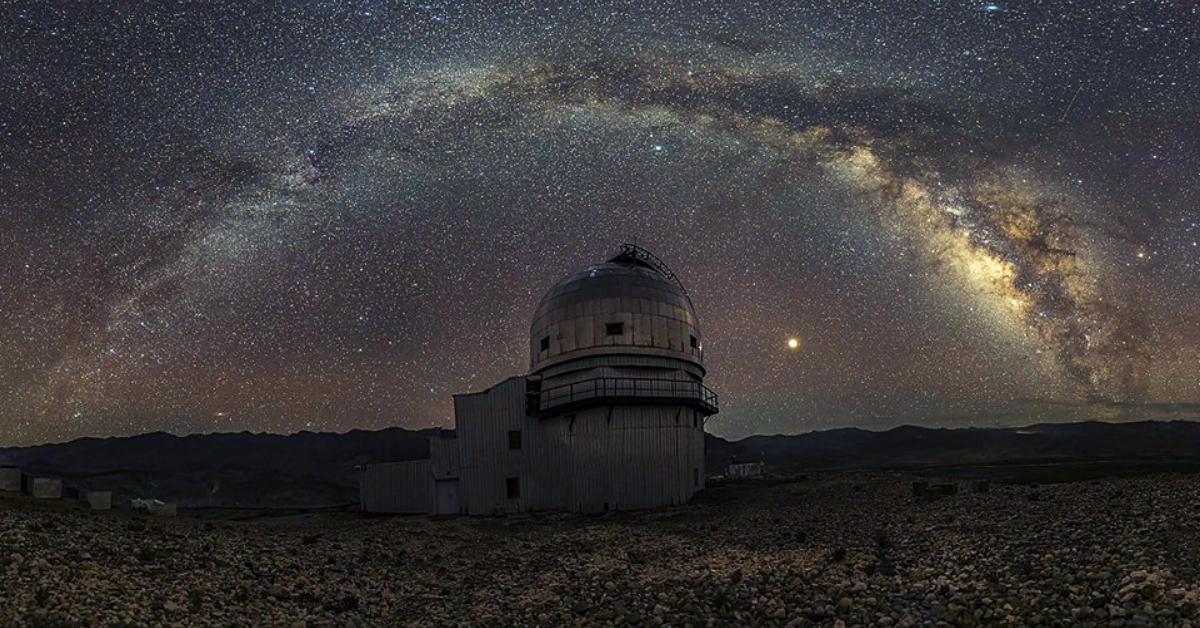
Standing atop Mt Saraswati in the Hanle Valley of Changthang, Ladakh, at nearly 14,800 feet above sea level, is the Indian Astronomical Observatory (IAO)—the third highest optical observatory in the world.
In 1992-93, the Government of India commissioned six teams of astrophysicists from the Indian Institute of Astrophysics, Bengaluru, to visit different places in the Himalayan region and shortlist viable high-altitude sites for an Indian Astronomical Observatory.
Included in this list of sites were Tsomoriri Lake and Hanle in Ladakh; Kalpa, Lam Dal, and Kaza in Himachal Pradesh; and Kedarnath in Uttarakhand.
“When we got back together and exchanged notes, what we discovered was that in terms of both weather and logistical conditions, Hanle would be the best choice. Although it’s considered a remote area, it was not snow-bound, and besides, there was an all-weather road from Leh, which was very helpful. So, we zeroed in on Hanle, but first decided to monitor weather conditions there,” says Professor Tushar Prabhu, an astrophysicist, and the person who led the efforts for setting up the Observatory, in an exclusive conversation with The Better India.
The first team visited Hanle in August 1993, staying in tents at the northwestern base of Mt Saraswati (Digpa-ratsa Ri in Ladakhi). During the following summer in 1994, the team set up tents at the peak and tried to conduct some observations with telescopes.
“In December 1994, I went to Hanle for the first time. My team initially set up camp at a hut offered to us by the Indo-Tibetan Border Police (ITBP), where we continuously monitored the clarity of night sky. The team installed a 45-cm telescope to monitor the sky quality, building a wooden structure for it with its own labour since no workers were available at site. We also set up a weather station on top of the mountain, and for almost a year collected data. By the end of 1995 we had data for an entire year and in the meantime moved away from the ITBP-sanctioned site, setting up shop closer to the spot where we have the observatory now,” he says.
In 1996, it was decided that Hanle was the best site for an observatory.
“The cloudless skies and low atmospheric water vapour make it one of the best sites in the world for optical, infrared, sub-millimetre, and millimetre wavelengths,” says the IIA website.
By some estimates, Hanle has 150-180 cloud-free nights, besides over 260 nights, that are useful for observations. Moreover, it isn’t affected by monsoons, thus experiencing fewer instances of cloud cover.
“The monsoon season presents obstacles for night sky observations everywhere south of the Himalayas. In Hanle, we can observe the clear night sky all through the year. The total number of clear nights are large,” adds Dr Prabhu.
“We immediately asked for land from the Jammu & Kashmir government, and they transferred it to us by 1996/97. We initially proposed India’s largest telescope—one measuring 6-metres. However, a government-appointed committee looking into this proposal rejected it on logistical grounds, and instead decided that we should start with a 2-metre telescope. The objective here was to show the telescope’s remote operation capabilities before proposing a bigger one,” he says.
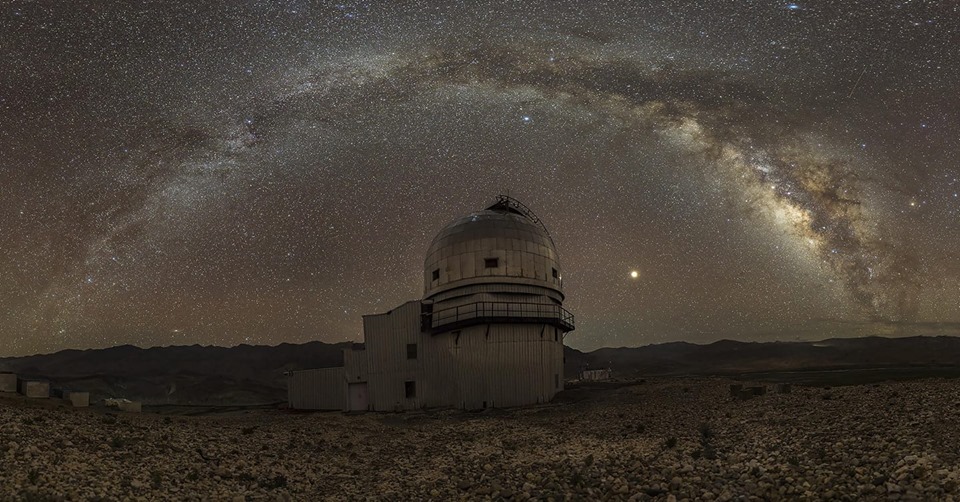
Following the committee’s recommendation, the team from the Indian Institute of Astrophysics immediately issued a proposal for the same.
From 1996-99, the team worked day and night to set up everything needed for the observatory. They ordered a telescope from Electo-Optical System Technologies Inc. at Tucson, Arizona, USA—a company that had their confidence, apart from providing the lowest quote.
What the observatory acquired was the 2-metre Himalayan Chandra Telescope (HCT).
“It is remotely used from IIA’s Centre for Research and Education in Science and Technology (CREST) campus at Hosakote, near Bengaluru. The telescope and instruments are controlled using a dedicated satellite link. Another interesting feature of the telescope is that all science instruments are available and ready for use every night. This makes it very useful to observe objects across both the optical and NIR wavelength regions nearly simultaneously,” says Dr GC Anupama, senior Professor at Indian Institute of Astrophysics and president of the Astronomical Society of India, speaking to The Better India.
Her first association with the IAO project was in 1996 when she analysed the data obtained to understand the site parameters.
Later, when the 2-metre HCT was installed in 2000, she led the group that undertook the science verification and commissioning of the telescope.
She was also involved with the instruments for the HCT—their selection, design verification, installation, and commissioning.
The telescope is cost-effective and easy to operate even in harsh weather conditions marked by very low temperature and humidity.

2. GROWTH Telescope getting ready in its quest for Transient events.
3. Saturn sitting comfortably near the Milky-Way dark lane.
4. Milky-way.
5. Jupiter towering above the Himalayan Chandra Telescope.
6. Himalayan Chandra Telescope, having already started its quest for understanding of the Universe for the night.
7. Venus setting over National Large Telescope site
The occasion was also special since there was planetary alignment of 5 planets with Pluto giving a fleeting/guest appearance in between Mars and Saturn, not clearly visible in this panorama. Beautiful Red airglow also showing its presence through out the sky. (Source: Dorjey Angchuk)
“The temperature at the telescope site varies between +25°C during summer afternoon and –25°C during winter early mornings. The extremes have reached a little beyond these values during a few years. Humidity can rise in summer when some clouds bring in moisture and cool the weather. The average annual relative humidity is 30% with less than 10% for a significant time,” adds Dr Prabhu.
According to Dr Anupama, “The 2-metre Himalayan Chandra Telescope (HCT) at IAO has been observing several interesting objects, ranging from objects in our solar systems such as comets to distant objects such as supernovae, gamma-ray burst sources, and quasars.”
However, before installing the telescope, Dr Prabhu, who was appointed project manager of the HCT in 1996, and his team, had to get all the infrastructure in place.
“For remote operation, we needed satellite-based communication systems. There was no direct source of electricity, so we set up a solar power plant to power the entire observatory. Our detectors needed to be cooled with liquid nitrogen, which you can buy cheaply in the plains, but unavailable in these parts. We had to buy a plant to make our own liquid nitrogen. We also had the Border Roads Organisation build a road to the observatory on the mountain top. In 2000, we installed the telescope, and remote operations were demonstrated in 2001,” says Professor Prabhu.

The observatory also required some more instruments to utilise the telescope better.
“For regular operations, we needed an imaging and spectrograph camera, and since the sight stood good for infra-red observations, we also wanted infra-red instruments, which we didn’t have initially. All these other instruments were installed by 2002. In the following year (2003), we started regular operations for astronomers. Utilizing this infrastructure, very high energy gamma-ray astronomy was also initiated with the commissioning of HAGAR (High-Altitude Gamma Ray) telescope in 2007 and MACE (Major Atmospheric Cerenkov Experiment) telescope in 2015,” he adds.
The 21-m MACE telescope under construction is expected to be operational this summer.
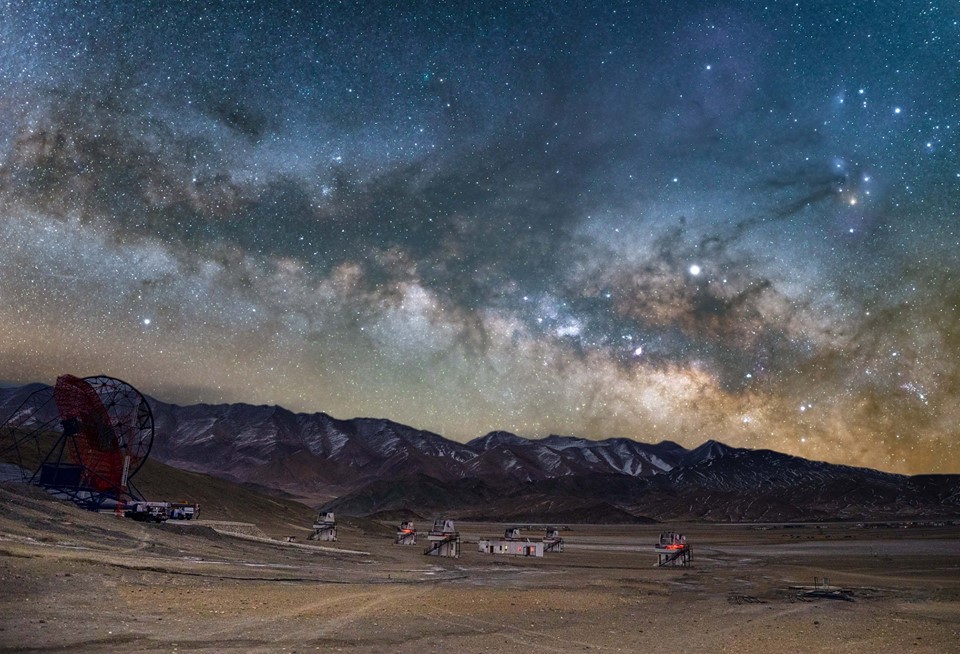
Initially, the observatory began working with some general-purpose instruments. For example, the observatory had a small infra-red camera, but later on, the astronomy group at the Tata Institute of Fundamental Research, Mumbai, developed an infrared imager and spectrograph for it.
“At IIA, a lot of astronomers are interested in studying abundances of elements in stars and how they evolved. They developed a new instrument of a very high-resolution, a spectrograph, which costs as much as the telescope. The spectrograph is located at the base of the observatory, and the light is brought from the telescope into the instrument through an optical fibre,” adds Dr Prabhu.
More recently in June 2018, a 0.7m robotic telescope was installed at IAO, under the international GROWTH project. This telescope, the first robotic telescope in India is dedicated for observations of transients.
“Called GROWTH-India, the facility at Hanle is part of a multi-country collaborative initiative known as ‘Global Relay of Observatories Watching Transients Happen’ (GROWTH) to observe transient events in the universe. The fully robotic optical research telescope is designed to capture cosmic events occurring in timescales much shorter than light years – years, days and even hours,” reports The Hindu.
In astronomy, discoveries are led by large telescopes. Detailed study of brighter stars, supernovae where the heaviest elements in the universe are made, and galaxies are undertaken by smaller telescopes to achieve better understanding of these objects.
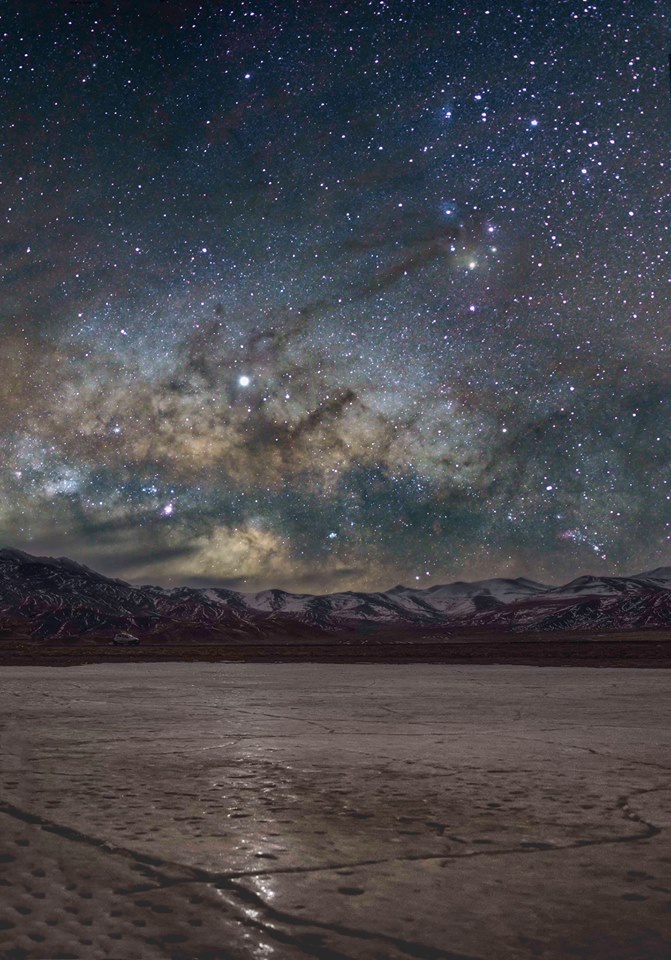
Many scientists using the HCT to observe the supernovae also take note of Gamma Ray burst sources. Another area of research is the star-forming regions, where the TIFR infrared astronomy group has initiated the study of the star formation process.
With this infrared instrument and supporting optical instrument, the impact of these studies has been great. “Also, thanks to the new spectrograph, we are utilizing our telescope data instead of sourcing it from abroad,” adds Dr Prabhu.
Beyond the scientists and researchers are also the engineers and other staff members who help run the facility on a daily basis. Speaking to The Better India, Dorjey Angchuk, the engineer-in-charge at the observatory, says that his main job is to ensure the uninterrupted observation from this remote telescope.
“We have to ensure there is no outrage in the communication system. Another key component is to ensure a constant supply of power. We have been successfully operating 3x30kWp solar power plant all these 21 years and not even once we had to switch on diesel generators for the telescope operation. This is truly an eco-friendly venture,” says Dorjey.
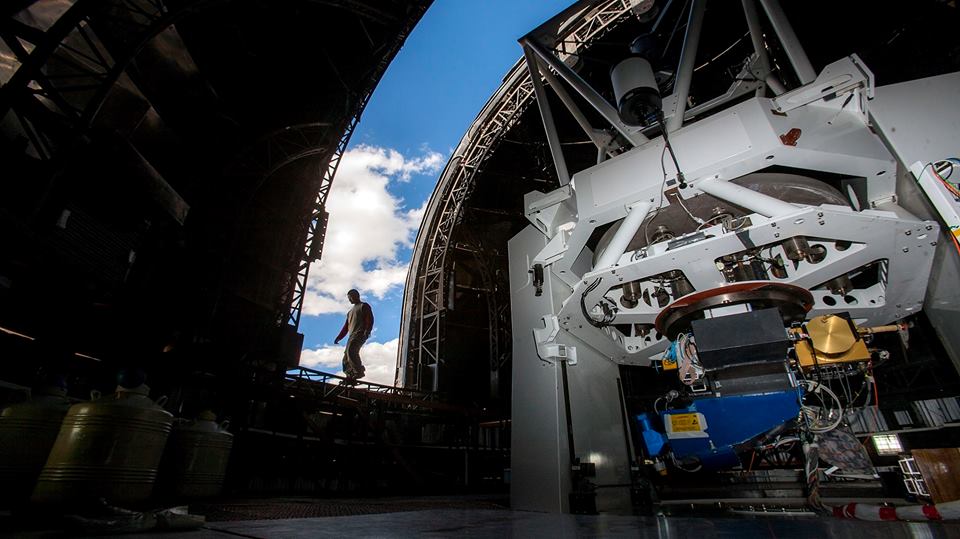
At any given time, there are around five engineers and one scientist there. Other staff including drivers, cooks, housekeeping, technicians and night assistants also play a critical role in running the facility.
In all, there are around 25 people working for the observatory.
While Dorjey’s family lives in Leh, Hanle has become a second home, and besides his official responsibilities, he also engages in astrophotography as a hobby—combining work with pleasure.
“It was one of those cloudy nights (rest time) when I had to go out on a nature call at 3:00 am outside the room (our toilets still get blocked during the long and harsh winters over here) stumbling in the darkness. However, astonishingly the clouds cleared up and the milky way magically appeared before me in all its magnificence.
It is a beautiful sight that you never get tired of and more importantly suppresses all the problems (the remoteness, time spent away from the family) around you,” he adds.
But the qualities that have made Hanle such a fascinating sight for stargazers are under threat.
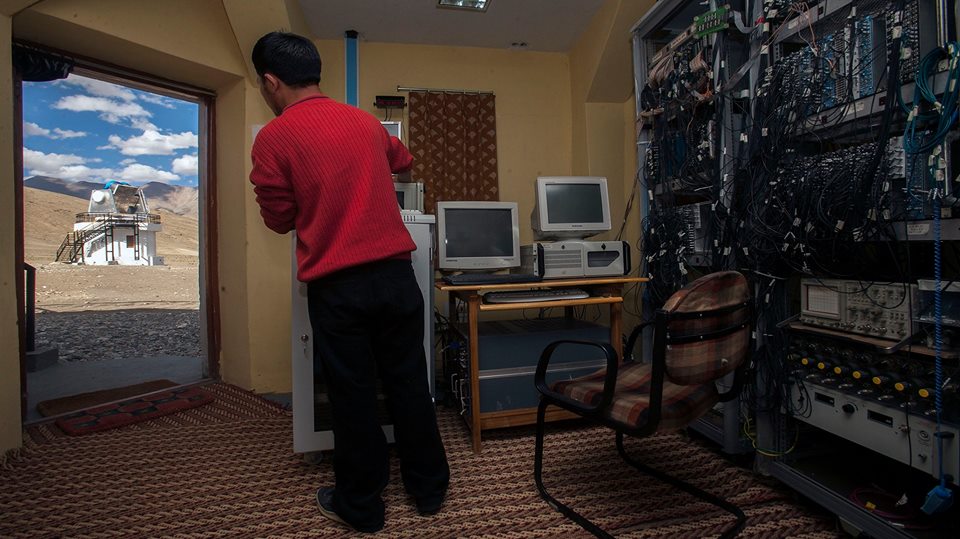
“The transparency of sky is hence very high and the brightness of night sky is low. Due to a lack of urban and industrial development, the light pollution is also non-existent except for some outdoor lights installed by the government in villages and government units outside the observatory,” says Dr Prabhu in this 2009 paper published for the Indian National Science Academy journal.
Also Read: Serving for Decades, Ladakh’s 75-YO ‘First Doctor’ Just Won Padma Shri
However, the explosion in tourist activity, rising pollution, and global warming are posing a real threat to not just the environment but the clarity of the night skies.
“The dark skies at Hanle make it one of the best sites for astronomy, and this has to be preserved,” says Dr Anupama.
(Edited by Gayatri Mishra)
Like this story? Or have something to share?
Write to us: [email protected]
Connect with us on Facebook and Twitter
If you found our stories insightful, informative, or even just enjoyable, we invite you to consider making a voluntary payment to support the work we do at The Better India. Your contribution helps us continue producing quality content that educates, inspires, and drives positive change.
Choose one of the payment options below for your contribution-
By paying for the stories you value, you directly contribute to sustaining our efforts focused on making a difference in the world. Together, let’s ensure that impactful stories continue to be told and shared, enriching lives and communities alike.
Thank you for your support. Here are some frequently asked questions you might find helpful to know why you are contributing?


This story made me
-
97
-
121
-
89
-
167













